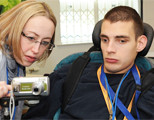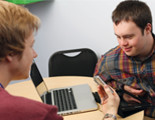Evidence
This is a work in progress but aims to gather some research around the key concepts in AAC and EC. Please note you are encouraged to evaluate papers yourself and citation here does not necessarily equal endorsement.
Modelling / Aided Language Stimulation
Bruno, J., & Trembath, D. (2006). Use of aided language stimulation to improve syntactic performance during a weeklong intervention program. Augmentative and Alternative Communication, 22(4), 300-313.
Binger, C., & Light, J. (2007). The effect of aided AAC modeling on the expression of multi-symbol messages by preschoolers who use AAC. Augmentative and Alternative Communication, 23(1), 30-43.
Drager, K. D., Light, J. C., Speltz, J. C., Fallon, K. A., & Jeffries, L. Z. (2003). The performance of typically developing 2½-year-olds on dynamic display AAC technologies with different system layouts and language organizations. Journal of Speech, Language, and Hearing Research, 46(2), 298-312.
Sevcik, R. A., Romski, M. A., Watkins, R. V., & Deffebach, K. P. (1995). Adult partner-augmented communication input to youth with mental retardation using the system for augmenting language (SAL). Journal of Speech, Language, and Hearing Research, 38(4), 902-912.
Romski, M., & Sevcik, R. A. (2005). Augmentative communication and early intervention: Myths and realities. Infants & Young Children, 18(3), 174-185.
Goossens', C. (1989). Aided communication intervention before assessment: A case study of a child with cerebral palsy. Augmentative and Alternative Communication, 5(1), 14-26.
Harris, M. D., & Reichle, J. (2004). The impact of aided language stimulation on symbol comprehension and production in children with moderate cognitive disabilities. American Journal of Speech-Language Pathology, 13(2), 155-167.





